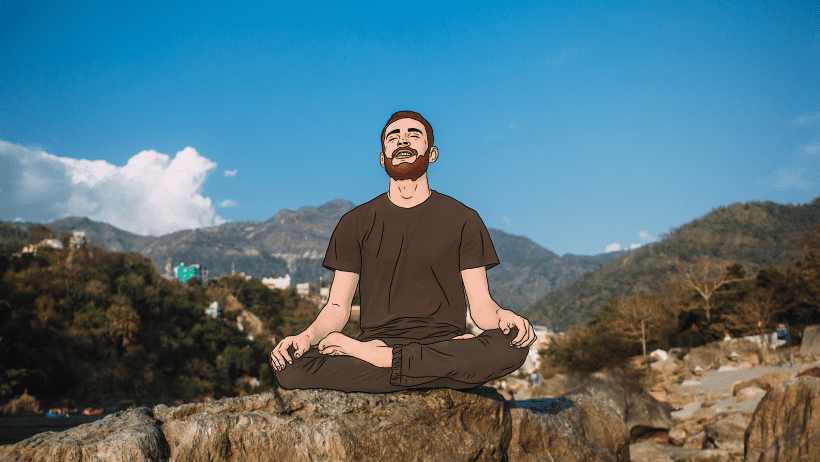 Vedic culture doesn’t see meditation as just something to do, but rather as something you’re always doing. The mind is always thinking about something, even during sleep. Recognizing this, the practice of meditation aims to focus our mental energy in a way that is both uplifting and enlightening. Whether you’re looking for a daily de-stress or an experience that expands your sense of self and reality, this is the place to start.
Vedic culture doesn’t see meditation as just something to do, but rather as something you’re always doing. The mind is always thinking about something, even during sleep. Recognizing this, the practice of meditation aims to focus our mental energy in a way that is both uplifting and enlightening. Whether you’re looking for a daily de-stress or an experience that expands your sense of self and reality, this is the place to start.
How does meditation work?
According to the Vedas, the mind is the cause of our happiness and distress in this world. Many people mistakenly think that happiness is caused by external factors, like warm weather, being with friends, or having lots of money. However, if our mind is agitated by extreme emotions, like anger, greed, or anxiety, then we will never find peace or happiness even in the most tranquil and positive environments.
Meditation first and foremost is a practice that enables you to distinguish your true self, the soul, from your mind. When you realize that you are a witness to the mind’s movements, you can gradually learn to control it. The next stage of meditation is learning to control your mind. When the mind is controlled and calm, the natural happiness of the soul shines through. Check out some of our articles below where we explain different types of meditation, and how you can get started in your own practice.
Here are some additional articles you can explore as you develop your own daily meditation practice:
- Importance of the Brahma Muhurta
- An Easy Guide to Meditation
- What Happens to Your Brain When You Meditate
- What is Trataka Meditation?
- How to Control Your Mind
The Bhagavad-gita
The way we approach meditation is largely influenced by our overall life outlook. For some, meditation is just a practice for increasing focus and productivity. For others, meditation is a gateway to spiritual experience, and ultimately to connection with the Divine.
The Bhagavad-gita presents the classic Vedic paradigm of the yoga path, culminating in the parallel experience of self-realization and God-realization, otherwise known as Krishna consciousness. In the articles below, we summarize the core teachings of the Bhagavad-gita to help others attune their worldview to the ancient wisdom of the Vedas.
- Overview of the Bhagavad-gita
- Bhagavad-gita On the Self Karma and Reincarnation
- Bhagavad-gita On Recognizing a Guru
- Bhagavad-gita On Self-Realization
- Bhagavad-gita On Freedom
- Bhagavad-gita and the Yoga Ladder
- Bhagavad-gita On Transcending Oneness
Topics in Yoga Philosophy
For those looking to browse a wider sampling of the Vedic teachings than just the Bhagavad-gita, we have a series of articles on different topics:
- What is the Soul?
- What is the Dharma?
- What is the Matter?
- What is Reincarnation?
- What is Karma?
- What is the Absolute Truth?
- What is Self-Actualization?
- What is a Guru?
- What are the Vedas?
- What is Time?
- Bhagavata-Purana: Crown-jewel of the Vedas
- Why Does God Allow Suffering?
- 5 Symptoms of a Self-Realized Person
- On Attachment and Renunciation
- On Anxiety
- On Consciousness
- On Depression
- On Enlightenment
- On Faith and Doubt
- On Greed
- On Grief
- On Guilt
- On the Mind
- On Shame
- On Uncertainty and Confusion
 An Overview of Vedic Meditation
An Overview of Vedic Meditation What is Mantra Meditation?
What is Mantra Meditation? Benefits of Loving-Kindness Meditation & How to Start
Benefits of Loving-Kindness Meditation & How to Start 10 Reasons You Should Meditate, Backed By Science
10 Reasons You Should Meditate, Backed By Science 10 Ways to Fit Meditation into Your Daily Life
10 Ways to Fit Meditation into Your Daily Life How to Introduce Meditation to Kids
How to Introduce Meditation to Kids